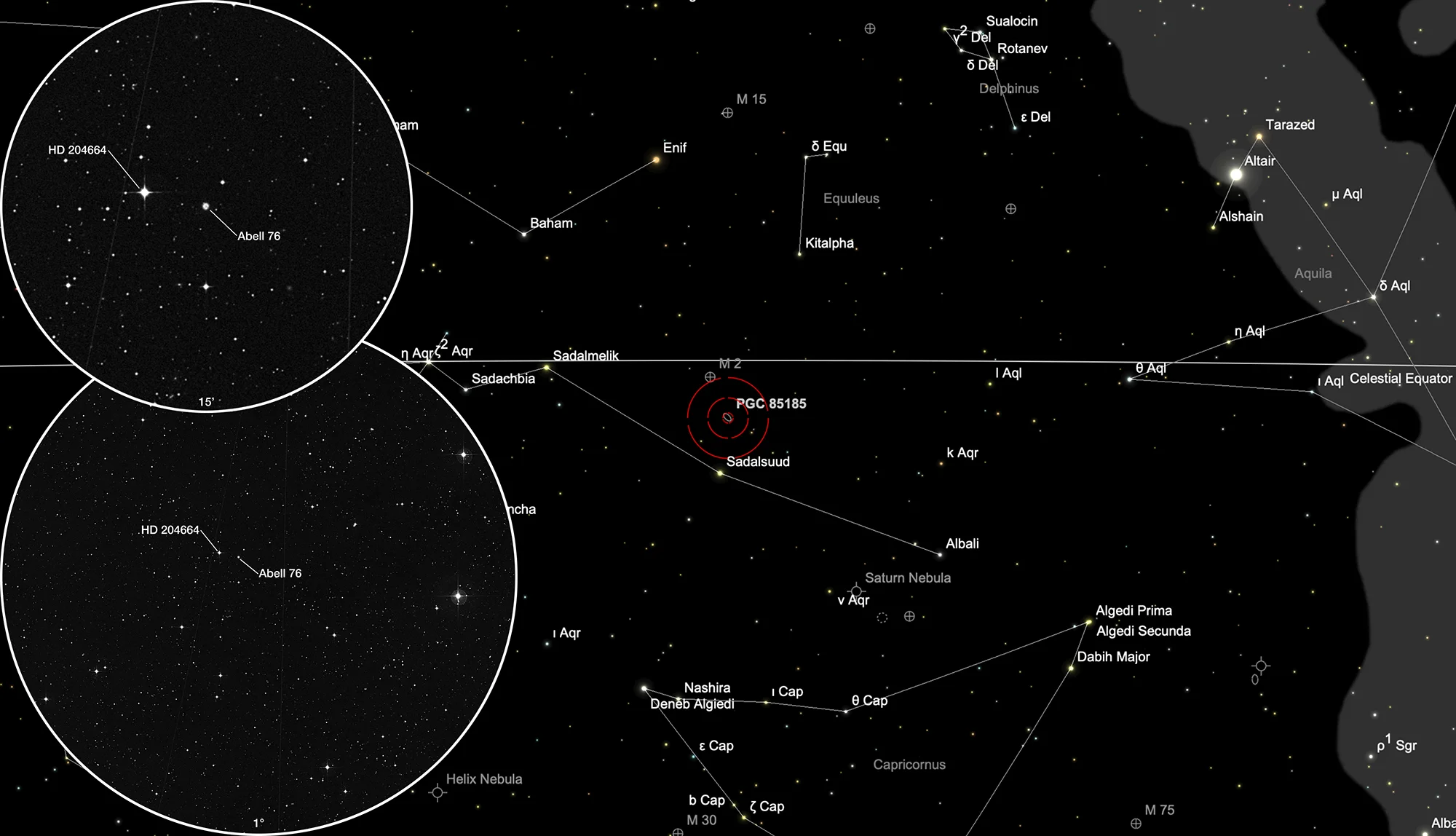Galaxy Abell 76

History
Abell 76 was discovered in 1955 by the American astronomer George Ogden Abell on the photo plates of the Palomar Observatory Sky Survey (POSS). In 1955 he published a first list of 13 globular clusters and the positions of 73 planetary nebulae. The PN had the number 62 (A55 62). In 1966 Abell published a complete list including the size and description of the 86 planetary nebulae discovered on the POSS photo plates. He described its morphological appearance as «E» — a symmetrical ring with gaps (incomplete ring). [331, 332]
In 1971 French astronomer Marguerite Chopinet first pointed out that Abell 76 was not a galactic nebula. She used the 1.2 m telescope of the Haute-Provence Observatory and an image-tube spectrograph to obtain a spectrum that showed several redshifted features. The calculated radial velocity and derieved distance led to the conclusion that Abell 76 was a galaxy. The misclassification was also noted by Kohoutek in 1978. [246]
Physical Properties
Abell 76 is an emission-line galaxy with a morphological ring structure. The presence of extensive optical line emissions, high surface brightness and a strong blue continuum sugest that it is currently experiencing a very high rate of star formation, possibly be triggered by a collision with another galaxy, which could be accounted for the ring structure. The radial velocity derieved from the redshift is 3240±40 km/s, which gives with an assumed Hubble constant of 100 km/s/Mpc gives a distance of 32 Mpc. [246]
This galaxy is officially called IRAS F21274-0301, not to be confused with the Abell cluster of galaxies (Abell 76, ACO 76) in the constellation Pisces.
| Name | PN A66 76 |
| Object Type | Emission-line galaxy |
| Right Ascension (J2000.0) | 21h 30m 04s |
| Declination (J2000.0) | -02° 48' 29" |
| Radial velocity | 3369 km/s |
| Redshift z | 0.0113 |
| Magnitudes | B 15.45; R 14.47 |
| Identifiers | 6dFGS gJ213003.8-024833; IRAS F21274-0301; LEDA 188823; PK 050-36 1; PN A55 62; PN A66 76; PN ARO 360; PN VV' 549; WISE J213003.86-024828.8; WISEA J213003.87-024828.7 |
Finder Chart
The galaxy Abell 76 is located in the constellation Aquarius. On 13 August it is in opposition to the Sun and crosses the meridian at local midnight. The best time to observe is April to January, when it is highest at night.
